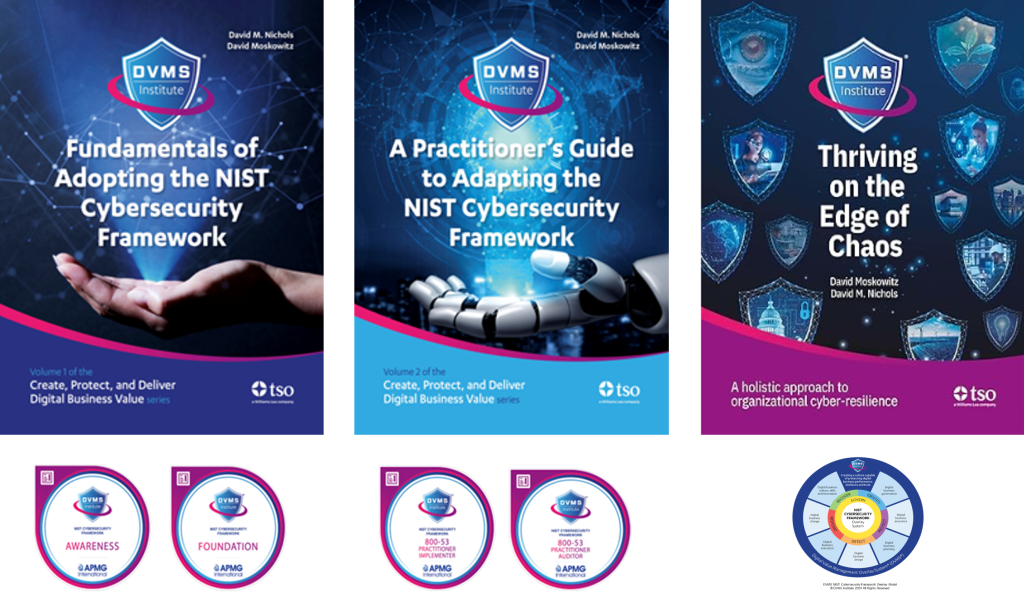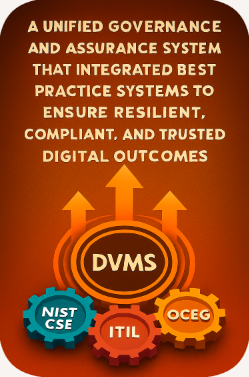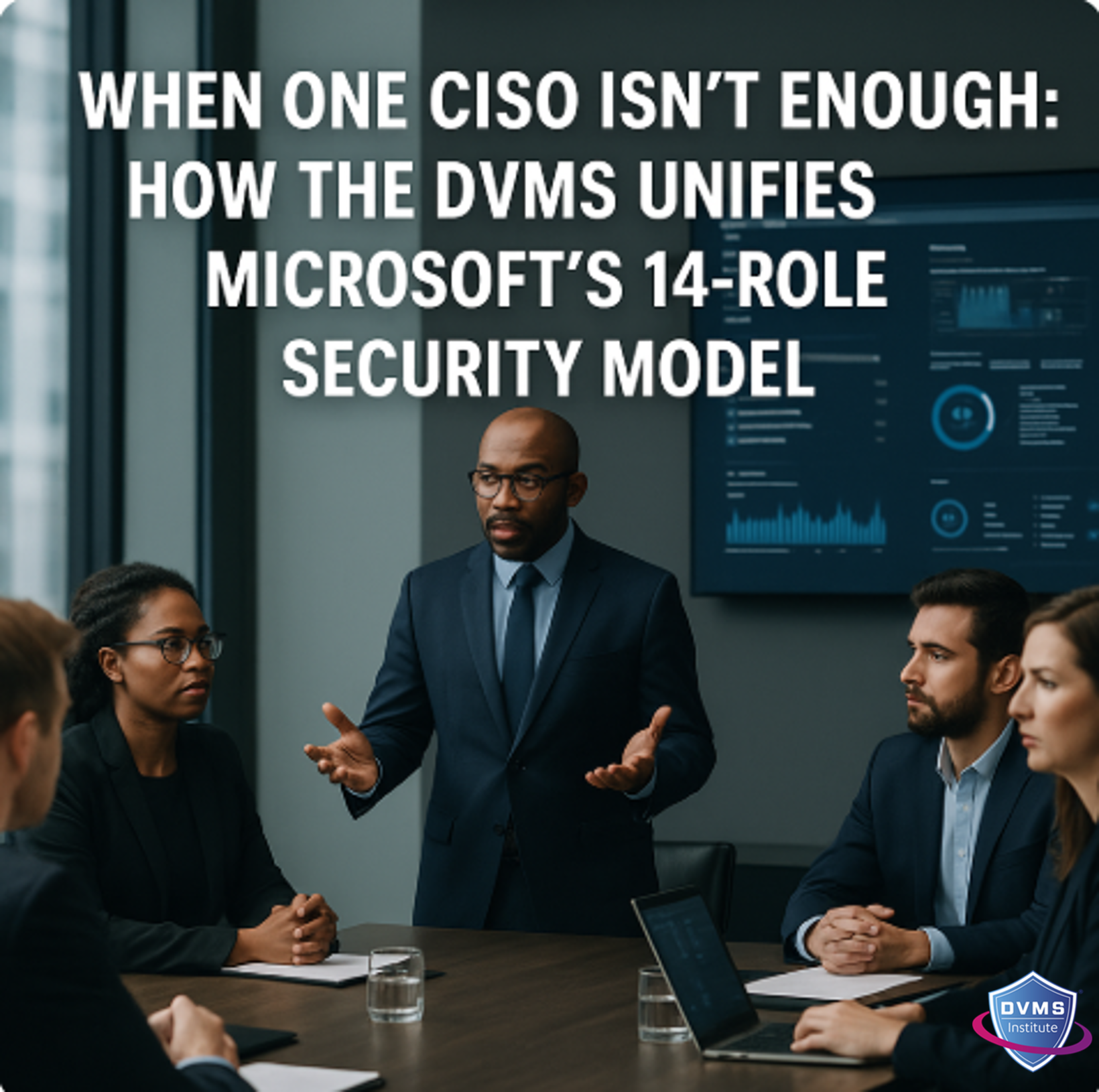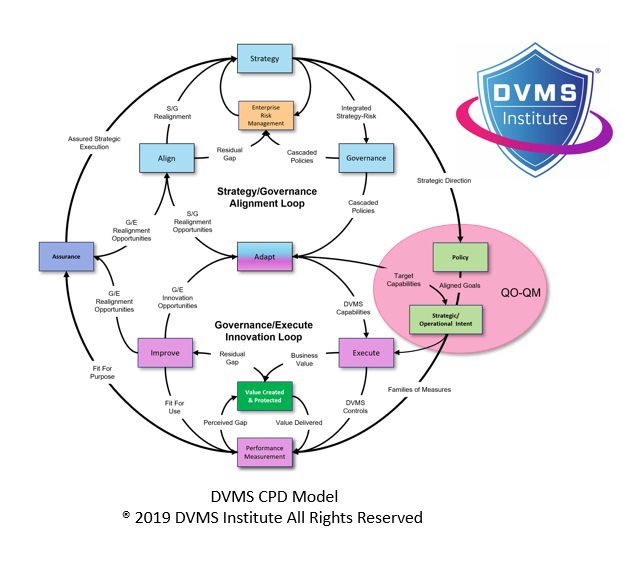Why Digital Enterprise Best-Practice Programs Need to be Integrated
Rick Lemieux – Co-Founder and Chief Product Officer of the DVMS Institute
Introduction: Why Frameworks Matter
In an increasingly digital, interconnected world, no organization can rely on ad hoc processes or tribal knowledge to manage risk, resilience, or performance. Frameworks provide structure, shared language, and repeatable best practices that scale with complexity. Whether a small business or a global enterprise, adopting the right combination of frameworks enables consistent governance, regulatory compliance, operational efficiency, and digital trust.
The following frameworks represent the most widely adopted, battle-tested best-practice programs across industries and geographies.
ITIL® (Information Technology Infrastructure Library)
Domain: IT Service Management (ITSM)
Publisher: AXELOS / PeopleCert
Overview:
ITIL is the world’s most widely adopted framework for IT Service Management. It provides a structured approach to designing, delivering, operating, and improving IT services that align with business needs. The latest version, ITIL 4, integrates Agile, DevOps, and Lean principles, emphasizing the co-creation of value between IT and the business.
Why It Matters:
- Scales from small IT teams to global IT enterprises.
- Provides transparent processes for service design, change management, incident response, and continual improvement.
- Enhances alignment between IT and business objectives.
Outcome: Reliable, measurable, and value-focused digital operations.
COBIT® (Control Objectives for Information and Related Technologies)
Domain: IT Governance and Enterprise Alignment
Publisher: ISACA
Overview:
COBIT bridges the gap between business strategy and IT execution. It defines governance and management objectives for enterprise IT, integrating compliance, performance, and assurance. COBIT 2019 is the most current version, emphasizing flexibility and alignment with other frameworks (NIST, ISO, ITIL).
Why It Matters:
- Connects IT performance to business value creation.
- Used by boards and executives for IT oversight.
- Scales from small IT departments to multinational governance systems.
Outcome: IT that is governed strategically, controlled efficiently, and assured transparently.
ISO/IEC 27001
Domain: Information Security Management System (ISMS)
Publisher: International Organization for Standardization (ISO)
Overview:
ISO 27001 is the global standard for establishing, implementing, maintaining, and continually improving an organization’s information security management system. It defines how to manage risk to confidentiality, integrity, and availability using risk-based controls from ISO 27002.
Why It Matters:
- Provides certifiable assurance of information security maturity.
- Accepted by regulators, auditors, and customers worldwide.
- Flexible enough for startups, government agencies, and global enterprises.
Outcome: Structured, auditable, and continually improving cybersecurity governance.
NIST Cybersecurity Framework (CSF 2.0)
Domain: Cybersecurity Governance and Risk Management
Publisher: National Institute of Standards and Technology (U.S.)
Overview:
The NIST CSF is one of the most influential cybersecurity frameworks globally. It defines six key functions: Govern, Identify, Protect, Detect, Respond, and Recover. The framework provides a roadmap for integrating cyber risk management into business governance.
Why It Matters:
- Universally applicable to any size or sector.
- Aligns regulatory expectations (DORA, NIS2, SEC Cyber Rules).
- Bridges technical cybersecurity with board-level accountability.
Outcome: A unified, resilience-oriented cybersecurity program aligned to strategic governance.
ISO 31000
Domain: Enterprise Risk Management (ERM)
Publisher: ISO
Overview:
ISO 31000 provides principles and guidelines for implementing risk management across all types of organizations. Unlike prescriptive frameworks, it focuses on integrating risk thinking into decision-making, governance, and culture.
Why It Matters:
- Flexible and scalable — applies to any size or complexity.
- Integrates seamlessly with GRC platforms and regulatory programs.
- Encourages proactive, value-based risk management.
Outcome: Risk is managed as a driver of performance, not just as a control function.
COSO ERM (Committee of Sponsoring Organizations – Enterprise Risk Management Framework)
Domain: Risk and Governance
Publisher: COSO
Overview:
COSO ERM focuses on embedding risk governance into strategy and performance. It helps organizations align risk appetite, business objectives, and accountability across leadership layers.
Why It Matters:
- Strong emphasis on board oversight and cultural alignment.
- Widely adopted in financial services, publicly traded companies, and regulated industries.
- Complements ISO 31000 and other governance frameworks.
Outcome: Enterprise-wide risk intelligence and alignment of risk with strategy.
ISO/IEC 20000
Domain: IT Service Management (ITSM)
Publisher: ISO
Overview:
ISO/IEC 20000 is the international standard for IT service management. It formalizes ITSM processes and allows organizations to certify that their service delivery meets global standards.
Why It Matters:
- Provides measurable assurance of IT service quality.
- Harmonizes ITIL and other frameworks into a certifiable management system.
- Ideal for service providers and enterprises seeking audit-ready assurance.
Outcome: Globally recognized, standardized IT service delivery and improvement.
COSO Internal Control Framework (ICIF)
Domain: Corporate Governance and Financial Assurance
Publisher: COSO
Overview:
COSO ICIF provides the foundation for internal control systems used in financial reporting and compliance (including Sarbanes-Oxley Act compliance in the U.S.). It defines control environments, risk assessment, information systems, and monitoring activities.
Why It Matters:
- Ensures financial integrity and compliance with laws and regulations.
- Core reference for auditors, boards, and CFOs.
- Scales easily across corporate functions.
Outcome: Transparent, compliant, and well-controlled financial and operational governance.
OCEG GRC Capability Model (Red Book)
Domain: Integrated Governance, Risk, and Compliance (GRC)
Publisher: OCEG (Open Compliance and Ethics Group)
Overview:
OCEG’s GRC Capability Model (Red Book) is the origin of the “GRC” concept. It provides an integrated approach to achieving objectives, addressing uncertainty, and acting with integrity. It aligns ethics, compliance, risk, and performance into one system.
Why It Matters:
- Promotes integration of governance, risk, and compliance.
- Supports both small and large organizations.
- Provides certifications (GRCP, GRCA) for professionals.
Outcome: Unified governance framework that strengthens ethical performance and integrity.
The Digital Value Management System® (DVMS)
Domain: Integrated, Adaptive, and Culture-Driven Digital Governance and Assurance
Publisher: DVMS Institute
Overview:
The DVMS is a next-generation governance and assurance system that integrates ITSM, GRC, and Cybersecurity into a unified overlay model. It builds on proven frameworks, such as NIST CSF 2.0, ISO 31000, OCEG, and ITIL, to create an adaptive system for transforming systemic cyber risk into operational resilience.
Why It Matters:
- Addresses the modern challenge of fragmented digital governance.
- Aligns technology, risk, and culture into one adaptive model.
- Provides board-level assurance of resilience, compliance, and trust.
Outcome: Operational resilience, regulatory compliance, digital trust, competitive edge.
Why Integration Is the New Best Practice
Individually, each of these frameworks is powerful. Together, they form the architecture of a resilient, compliant, trusted, and high-performing organization.
- ITIL and ISO 20000 manage service delivery.
- COBIT and COSO govern alignment and control.
- ISO 27001 and NIST CSF assure cybersecurity.
- ISO 31000 and OCEG guide risk and compliance.
- DVMS integrates them all into a single, outcome-focused system.
The future of best-practice adoption isn’t about choosing one—it’s about integration.
Conclusion: The Frameworks That Sustain Trust
Organizations fail not because they lack frameworks, but because they fail to integrate them. The most successful enterprises use frameworks not as static rulebooks but as living systems that align organizational strategy, governance, assurance, operations, and culture. Whether an organization is small, scaling, or global, using an adaptive and culture-driven Digital Value Management System® to align these frameworks into a unified system of systems that provides a proven path to operational resilience, regulatory compliance, and digital trust.
These frameworks are not just standards—they are the infrastructure of confidence in the digital economy. Without them, organizations operate on instinct. With them, they operate with assurance.
About the Author

Rick Lemieux
Co-Founder and Chief Product Officer of the DVMS Institute
Rick has 40+ years of passion and experience creating solutions to give organizations a competitive edge in their service markets. In 2015, Rick was identified as one of the top five IT Entrepreneurs in the State of Rhode Island by the TECH 10 awards for developing innovative training and mentoring solutions for boards, senior executives, and operational stakeholders.
Traditional best-practice approaches to IT Service Management (ITSM), Governance, Risk and Compliance (GRC), and Cybersecurity are insufficient to manage the resilience, compliance, and trust requirements of today’s complex digital ecosystems.
The DVMS Cyber Resilience Professional Certified Training programs teach Organizations the skills to evolve any best-practice program into an integrated, adaptive, and culture-driven Digital Value Management Governance and Assurance System® (DVMS) that ensures resilient digital business operations.
For ITSM
The DVMS elevates ITSM from a process-aligned service-delivery program into an integrated, adaptive, and culture-driven governance and assurance overlay system, ensuring the delivery of high-performance and resilient digital business outcomes.
For GRC
The DVMS elevates GRC from a compliance checklist activity to an integrated, adaptive, and culture-driven governance and assurance overlay system, ensuring the resilient, compliant, and trusted digital business outcomes regulators expect.
For Cybersecurity
The DVMS elevates any cybersecurity program (NISTCSF, ISO, etc.) from a control-centric defense program into an integrated, adaptive, and culture-driven governance and assurance overlay system, transforming systemic cyber risk into compliant and trusted operational resilience.
By adopting a DVMS, organizations are positioned to:
- Maintain Operational Stability Amidst Constant Digital Disruption
- Deliver Digital Value and Trust Across A Digital Ecosystem
- Satisfy Critical Regulatory and Certification Requirements
- Leverage Cyber Resilience as a Competitive Advantage

DVMS Explainer Videos
- Architecture Video: David Moskowitz explains the DVMS System
- Case Study Video: Dr. Joseph Baugh Shares His DVMS Story.
- Overlay Model – What is an Overlay Model
- MVC ZX Model – Powers the CPD
- CPD Model – Powers DVMS Operations
- 3D Knowledge Model – Powers the DVMS Culture
- FastTrack Model – Enables A Phased DVMS Adoption
Digital Value Management System® is a registered trademark of the DVMS Institute LLC.
® DVMS Institute 2025 All Rights Reserved




